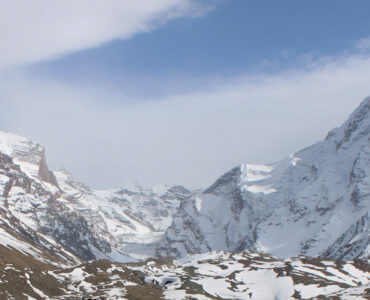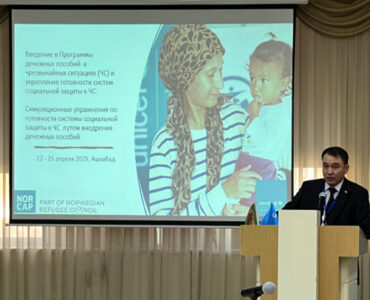An article by Dimitris Symeonidis in the journal of Geopolitical Report and another one by Eldaniz Gusseinov and Abakhon Sultonnazarov in the Central Asian Bureau for Analytical Reporting (CABAR) discuss the availability of raw materials other than oil and natural gas in Turkmenistan and Central Asia. Critical raw materials are defined as metals and minerals, such as lithium and cobalt, that are essential for the modern economy. Energy transition to renewable sources will rely on availability of critical minerals to develop wind turbines and solar panels and also for energy storage such as batteries and hydrogen solutions. For example, the European Union lists 34 materials that it considers critical.
After the war in Ukraine, the West is increasingly seeking ways to limit its reliance on Russia and China for rare earth metals needed for the transition to renewables. Central Asia has rich but mostly untapped mineral resources that may potentially position the region as a key player in the renewables sector. Kazakhstan has been active in attracting investments into critical raw material mining. However, Turkmenistan may have at least as much or even more reserves of different minerals essential for the transition. There is not yet a specific strategy on mineral mining and the exact volumes and locations of available reserves are not yet known.
Central Asia is known to have significant monazite, zircon, apatite, xenotime, pyrochlore, allanite, and columbite reserves. These materials are generally used in various applications such as electronics (capacitors and sensors), ceramics, and metallurgy, with specific uses including production of rare earth elements, nuclear reactors, and gemstones. Around 38.6% of global manganese ore reserves, 30.1% of chromium, 20% of lead, 12.6% of zinc, and 8.7% of titanium are reportedly located in the region.
Turkmenistan may have rich reserves of lithium in Western Turkmenistan, including Gogherendag, Kumdag, Uzboy, and Ekizak, and most notoriously Karabogazgol Bay, where the concentration of lithium in industrial waters estimated to be in the range of 15-20 mg/liter, compared to 1 mg/liter in most other regions.
Additionally, Turkmenistan has an estimated 70-75 million tons of iron ores in Gyzylgaya-V section of the Chagyl deposit in Western Turkmenistan, Serhetabat, and possibly, in Southern Turkmenistan. The country also has copper ores but more exploratory drilling activity is needed, especially in the South Turan Platform.
Furthermore, there may be rich reserves of rare earth materials in the Lebap province. Exploratory activities are needed to assess availability of Neodymium and Lanthanum.
Several countries are especially interested in tapping into Central Asia’s resources. These are the United States and China. In 2022, the U.S. established the Economic Resilience Initiative for Central Asia (ERICEN) with $25 million of allocated funding and also hosted the U.S.-Central Asia summit in 2023. The latter focused on securing access to the region’s rare earth metals and developing supply chains. A C5+1 Critical Minerals Dialogue between the U.S. and 5 Central Asian countries was held in February 2024 with potential future American investments into the region’s critical mineral sectors.
Donate to support Turkmen analysts, researchers and writers to produce factual, constructive and progressive content in their efforts to educate the public of Turkmenistan.
SUPPORT OUR WORKChina has also shown interest in the region by pledging $4 billion of financial aid to Central Asia. Furthermore, China currently dominates in the region as the majority of critical mineral mining licenses in Tajikistan and Kyrgyzstan are held by Chinese companies.
Opportunities and risks for the region
Development of critical raw material extraction presents opportunities for the region to develop and diversify its economy, attract foreign investments, and improve its strategic position on a global stage.
On the other hand, there are also risks such as potential dependence of the region on other countries for its economic stability. Furthermore, mining may cause environmental degradation to the already vulnerable environment of Central Asia. Geopolitical rivalry between foreign powers may also have an impact on countries in the region.
Rich mineral reserves may position Turkmenistan as one of the leading centers for green energy development, but the Subsoil Law which came into force in 2015 does not allow purchasing or selling activity on Turkmen soil. This creates barriers in securing permits and licenses for exploration and mining.
Recommendations for Turkmenistan include:
- To provide a similar regulatory framework to material mining as for hydrocarbons mining. Long-term leasing to the Subsoil Law and a possibility for private entities and research institutes to do exploratory activities in the country to be added;
- To develop international platforms with countries that Turkmenistan shares geological formations with Uzbekistan, Afghanistan;
- To develop financing frameworks, green bonds and other financial mechanisms in cooperation with international organization;
- To develop a comprehensive database on material reserves in Turkmenistan and sharing access to interested stakeholders.
Turkmenistan has rich renewable resources as well as critical materials, potentially positioning the country at the forefront of the energy transition. Financial, policy, and data-related challenges should be addressed in order to attract investments into the country.






